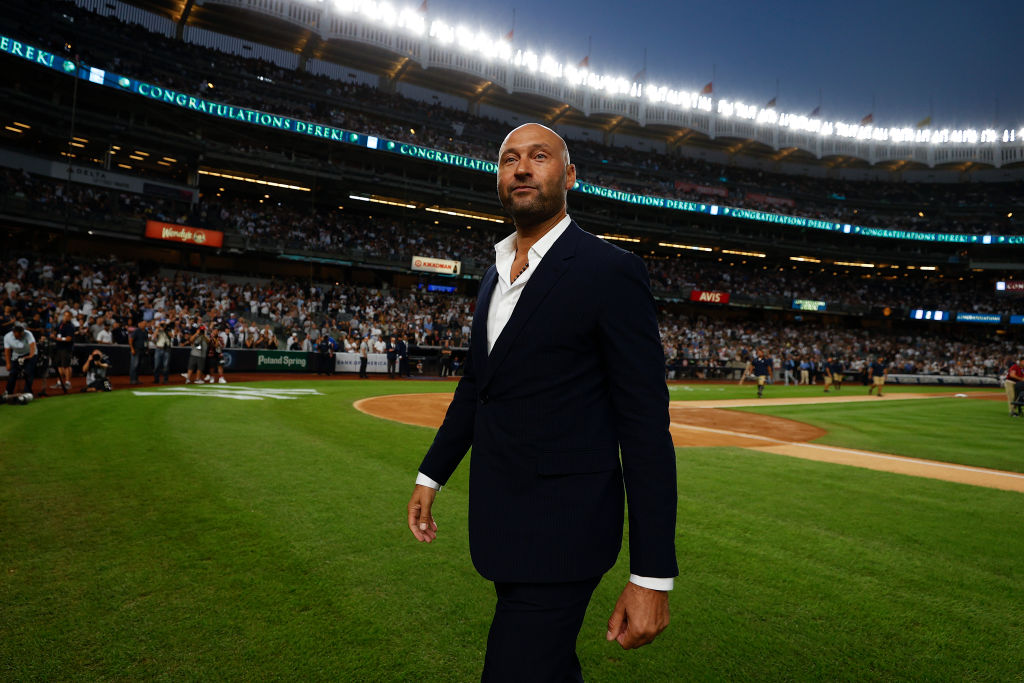We know the old sports cliché of one man’s triumph is another man’s tragedy. The long, often circuitous journey from local ball field phenom to pro status is filled with potential setbacks, pitfalls and roadblocks along the way. It’s like climbing Mt. Everest – only a few are fortunate enough to reach the top. Talent is the pivotal and decisive factor, but luck and fate are their complimentary partners in an athlete’s rise to greatness.
MLB held its 2014 Player Draft on Thursday. For the third-consecutive year the Houston Astros had the top pick and selected left-handed pitcher Brady Aiken out of Cathedral Catholic High School in San Diego, Calif. with the first overall pick. Aiken, a 6'4, 200-pound left-hander, is the first high school pitcher drafted first overall since Brien Taylor was picked first by a re-stocked Yankees franchise in 1991. Aiken posted a 1.06 ERA while striking out 111 batters and walking 15 in 59 innings during his senior season.
While draft day is surely a euphoric moment for Aiken, who sat on the coach in stunned disbelief with his family and loved ones when his name was announced, all it did for me was incite flashbacks and recollections of one of the saddest days in MLB history. Taylor was black Superman with a baseball – the next Dwight Gooden – when it all came crashing down in an NC, backwoods brawl driven by brotherly love.
Hopefully Aiken won’t be known in the same regretful way Taylor is remembered – as the kid who had it all and threw a punch that stopped him from ever throwing an MLB pitch.
Taylor was a rags-to-riches story that initially inspired greatness in young African-American ballplayers dreaming of the Big Leagues. He was a country boy on the rise with a golden arm on the side. Born in Beaufort, North Carolina to parents Willie Ray, who worked as a mason, and Bettie, who was a crab picker at the local seafood plant, Taylor’s legend began on the fields of East Carteret High School, where Taylor often put the clamps on his competition, stunting on the gun with a fastball that scorched suckers at 99 miles per hour. He had a stellar record of 29-6 and a miniscule 1.25 ERA.
The 6-3, 220-pound flamethrower conjured memories of past menacing and magnificent MLB hurlers; Bullet Bob Gibson, J.R. Richard, Dave Stewart and Lee Smith. At their peaks, these were the epitome of power pitchers, and they were brothers on the hill – something that doesn't happen often in MLB or The U.S. Governement.
Taylor also whiffed 213 hitters in 88 innings pitched while walking 28 at East Carteret. The baseball world knew he was in line for a heck of a come up and when the New York Yankees selected Taylor with the first overall selection in the 1991 Major League Baseball Draft, his baseball fairy tale was in full effect. The pinstripe hype added to the high expectations Yankees nation had for the young lefty.
He also went top shelf with his agent, signing a young Scott Boras as an advisor. Boras has represented a litany of MLB giants and overseen his share of record-breaking contracts. He said of Taylor in 2006, "Brien Taylor, still to this day, is the best high school pitcher I've seen in my life."
After being low-balled with a $300,000 offer by the Yankees, some financial fisticuffs ensued and Taylor’s team threatened the Yankees that he’d attend a Juco (Louisburg College) instead of signing. Eventually Boras and the Bronx Bombers worked out the numbers and Taylor signed for $1.55 million on August 26, the day before his classes were set to begin.
In the best laid plans of mice and men, Taylor would move swiftly up the minor league ranks and be ready to rock-n-roll at Yankee Stadium for 50,000 strong. Before even playing a pro game, he was named MLB’s top minor league prospect by Baseball America in 1992. Taylor showed flashes of brilliance in the minors, but had a weak pickoff move, so he progressed a bit slower than the Yankees originally planned. He did well in Double A and then entering the ‘93 season, he was named baseball's second-best prospect behind switch-hitting future HOF Chipper Jones.
Everything Was All Good Just A Week Ago
In 1994, he was expected to pitch for the Triple-A Columbus Clippers of the International League, and make his highly-anticipated MLB debut at some point during the 1995 season. In his first two years of pro ball, Taylor struck out 337 batters in 324 1/3 innings in Class A and Double-A. His ERA was 3.03.
After the 1992 season ended, the Yankees wanted Taylor to take part in an instructional league to work on his fundamentals. Taylor declined to attend the camp, and instead chose to return to his home in North Carolina.
(Imagine a loud, scratchy needle flying across a record. If I was directing the movie of Taylor's life, this would be the part where the narrator freezes the action, tells you about how Taylor’s about to make a life-altering decision that has a wicked domino effect on the rest of his life.)
On December 18, 1993, Taylor’s illuminating future turned to dingy, dark, dust when he got caught up in some hood beef and badly tore his capsule and glenoid labrum defending his brother Brenden in a fistfight. His million dollar limb was ripped off the bone and just that quick, the baseball god’s giveth and they cruelly taketh away. Taylor missed the 1994 season.
When he returned in ’95, he lost nearly 10 cents on his fastball, became a walk –machine and his once promising career fizzled out in 2000. Taylor would throw a total of 108 2/3 innings in Class A. His ERA was 10.85. He was released by the Yankees after the 1998 season. He would spend two years more in baseball with Seattle and Cleveland, pitching a total of 2 2/3 innings.
To a young African-American kid, who understands baseball’s historical significance to the black community, on a smaller scale, Taylor’s unfortunate turn of events was no different than when Pac and Big got gunned down. It cut deep, fractured hope and changed the way the draft game is played. Until Aiken's big night, Taylor's incident caused a two-decade moratorium on lavishing a high school kid with the No.1 pick and the cash that comes with it. He made them not worth the risk.
Gene "Stick" Michael, was the Yankees general manager in 1991 and credited with being a prolific talent evaluator and a key executive piece to the Yankees Dynasty of the late '90s-early 2000s. If Michael played Vegas he wouldn’t see many losing hands and he said this of Taylor:
"His arm slot was exactly like Randy Johnson's, not sidearm but very low three-quarters. They had the same exact arm slot, only Brien Taylor threw a little bit harder."
Damn. He threw harder than 6-foot-10, pea flinging “Big Unit”?
What a shame that the boy who was to be King couldn't beat the odds (only about 17 percent of signed draft picks ever make it to the majors); The cat the Yankees thought could be a left-handed Pedro Martinez, would never join his boy Derek Jeter, as a key cog in the ensuing Yankees Dynasty.
Watching My Life Go Down
By 2012, Taylor’s life had become one bad cliché and spiraled into a tornado of suspect decisions and dead-end drug activity. In August of that year, the former pride of Beaufort, North Carolina was sentenced to 38 months in prison after pleading guilty to distributing crack cocaine.
Taylor will also have three years of supervised release after his prison term. Taylor could potentially reduce his prison term by 15 percent with good behavior, according to the U.S. Attorney's office. Taylor was pushing mad yayo through the Carolinas. The Carteret County Sheriff’s Office say Taylor was serving to narcs for several months and was responsible for distributing more than 200 grams of hard crack and about 100 grams of soft white.
"This is a tragic story — all too often our professional athletes spiral into criminal activity after an athletic disappointment or injury," Thomas Walker, U.S. Attorney for the Eastern District of North Carolina, told ESPN in a statement. "I think all of us hope that Mr. Taylor, like many others who have gone down this road, will put their activity behind them and move to a better place in their life."
Said Boras in an espn.com oral history of Taylor’s tragic circumstances:
"You know what? Brien Taylor's arm was so good, he came back from rotator cuff surgery and he still threw over 90 miles per hour, but he was no longer Brien Taylor."
He sure ain't. Now he’s Federal Inmate number 56437-056.
As a Yankees fan, that still rips my gut up five World Series c’hips later



